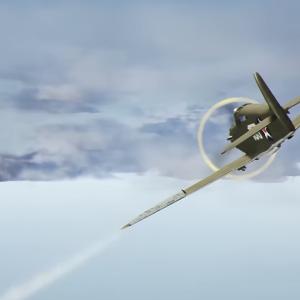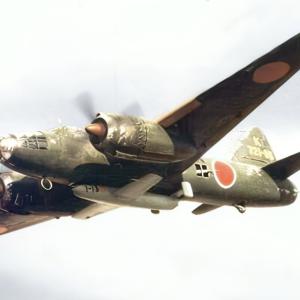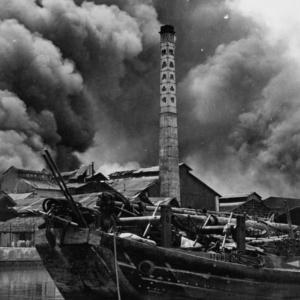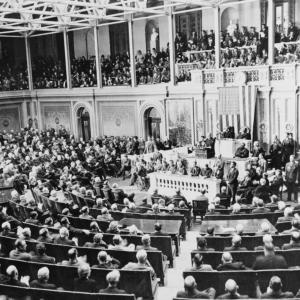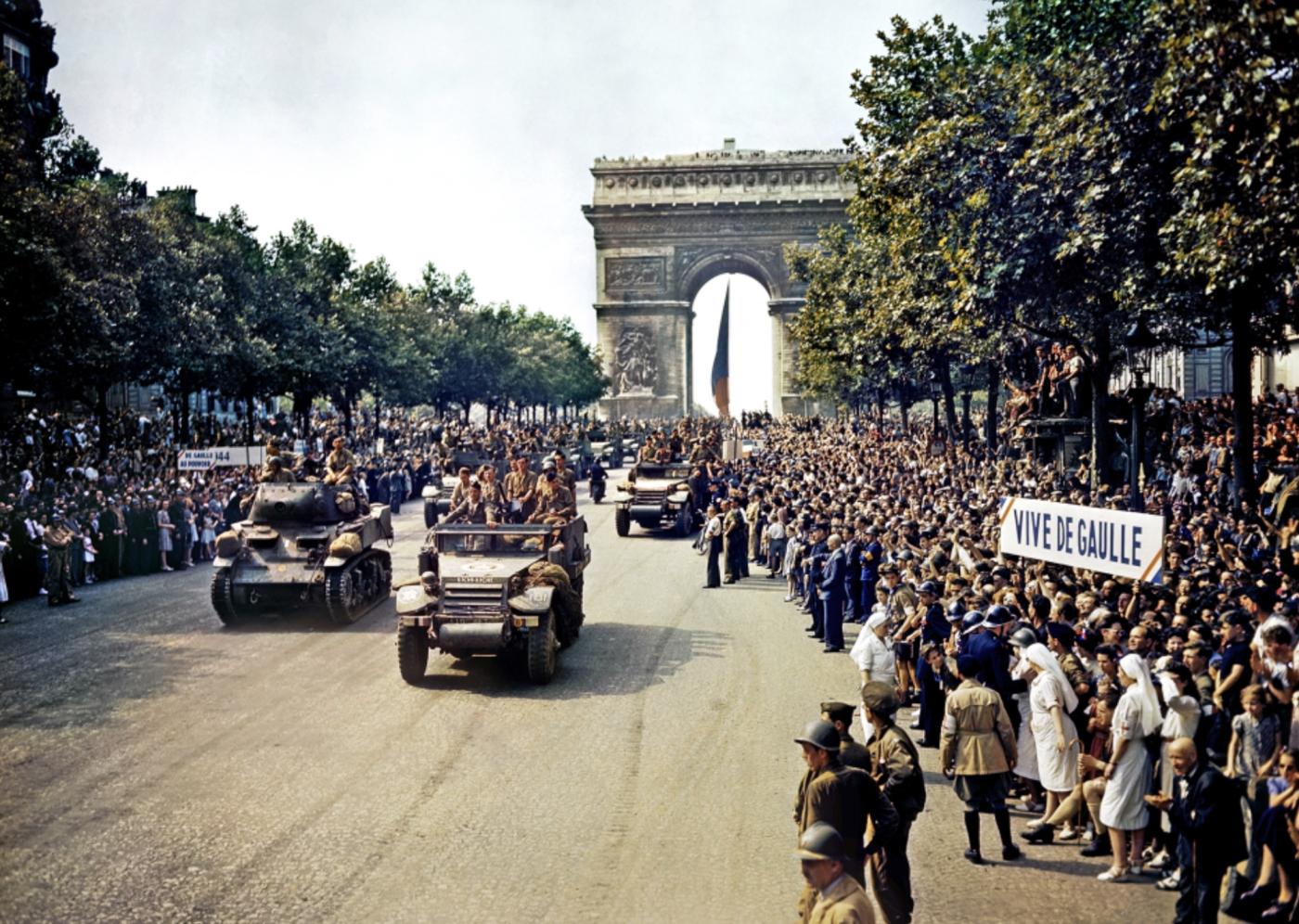
On this day in military history…
The liberation of Paris on the 25th of August 1944 marked one of the most symbolic and emotionally charged moments of the Second World War. It was not only the reclaiming of a European capital from Nazi occupation but also a moment that signaled a turning point in the war effort and the rekindling of French national pride. The liberation was the result of a combination of Allied military planning, swift action on the part of Free French forces, and a significant uprising from within the city by the French Resistance. It unfolded quickly, yet the momentum behind it had been building for years, shaped by the complex dynamics of strategy, politics, and the will of a people who had endured four years of occupation.
Following the successful Allied landings in Normandy in June 1944 and the subsequent breakout from the beaches in Operation Cobra, Allied forces under General Dwight D. Eisenhower were making rapid progress through northern France. The original Allied plan did not prioritize the immediate liberation of Paris. Eisenhower and his staff were concerned about the logistics of supplying a large army in an urban setting, the risk of heavy casualties, and the potential destruction of the historic city. Instead, the priority was to continue pushing the Germans back toward the Rhine and maintain momentum across a broad front. However, the situation in Paris changed the calculus.
Inside Paris, the French Resistance, galvanized by the Allied advance and the weakening of German control, began a large-scale uprising on August 19. Led by the French Forces of the Interior (FFI), the resistance sabotaged German communications, seized key buildings, and erected barricades across the city. Skirmishes broke out with German forces, and Paris quickly became a battlefield. The uprising was not only a military effort but also a political statement, aimed at preventing the establishment of an Allied military administration and ensuring that Free French forces, under General Charles de Gaulle, would be seen as the legitimate liberators of the capital.
General Philippe Leclerc, commanding the French 2nd Armored Division (2e Division Blindée), and American Major General Leonard T. Gerow of the U.S. 5th Army Corps were already pressing toward Paris. Despite initial reluctance from Eisenhower, de Gaulle strongly pushed for immediate action. Fearing that the resistance might be crushed and that a Communist-led uprising could preempt his authority, de Gaulle convinced Eisenhower to divert forces to liberate the city. Permission was granted, and Leclerc’s division was ordered to move on Paris, supported by elements of the U.S. 4th Infantry Division under Major General Raymond Barton.
On August 23 and 24, Leclerc’s units raced toward Paris, with vanguard elements reaching the outskirts by the evening of the 24th. One of the first Allied units to enter the city was the 9th Company of Leclerc’s division, famously known as “La Nueve,” composed largely of Spanish Republican exiles who had fled Franco’s Spain and joined the Free French. These soldiers, many of whom had already fought fascism in Spain, were among the first to reach the Hôtel de Ville, the city hall, where they were greeted by an ecstatic crowd of Parisians.
German forces in the city, under General Dietrich von Choltitz, were heavily outnumbered and faced with a widespread civilian uprising. Choltitz had been ordered by Adolf Hitler to destroy the city rather than let it fall into Allied hands. Demolition charges had been placed on bridges, monuments, and key infrastructure. However, Choltitz, recognizing the futility of his situation and the cultural value of Paris, disobeyed the scorched-earth orders. He later claimed he refused to destroy the city out of personal conviction, although he was also influenced by the knowledge that Allied forces were closing in and that resistance fighters had already seized parts of the city. On the morning of August 25, Leclerc’s forces pushed deeper into Paris, engaging in sporadic street fighting with German holdouts. The 4th U.S. Infantry Division entered from the south and southeast, adding their weight to the liberation effort.
By midday, German resistance had crumbled. General von Choltitz, having taken refuge in the Hotel Meurice near the Tuileries, surrendered to General Leclerc and Resistance leaders, including Colonel Rol-Tanguy of the FFI. The formal surrender took place in the Montparnasse train station. Parisians erupted into the streets, tearing down swastika flags, embracing liberators, and celebrating with tears and joy. Charles de Gaulle arrived in the city later that day and made a triumphal march down the Champs-Élysées on August 26, an iconic moment that reasserted French sovereignty and unity.
Despite the relative speed of the liberation, there had been resistance from German troops, especially during the early days of the uprising. Snipers, pockets of well-armed troops, and tanks defended strongpoints like police stations, key bridges, and administrative buildings. Clashes were often intense in localized areas, with casualties on both sides, including civilians caught in the crossfire. The Resistance fighters, often poorly armed, relied on sabotage, barricades, and local knowledge to hold off the better-equipped German forces until the arrival of Leclerc’s and Barton’s troops.
The liberation of Paris was ultimately a result of coordination between internal French resistance and external Allied military strength. It demonstrated the power of combined political will and military action. Although the city was spared from the large-scale destruction feared by many, the liberation came at a cost—over 1,500 resistance fighters died in the weeklong uprising, alongside hundreds of civilians and soldiers. Yet the liberation of Paris restored hope to occupied Europe and reminded the world that France, despite years under Nazi control, had not given up the fight. The moment symbolized not just military victory but the enduring spirit of a people determined to reclaim their freedom.

